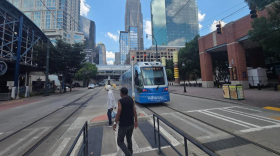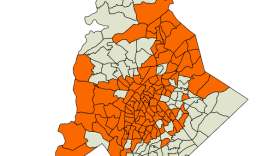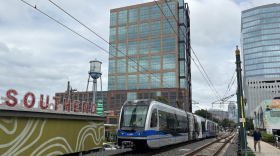-
A second stabbing on the light rail leads to more questions about safety on public transit, Gov. Stein cancels Medicaid reimbursement rate reductions. CMS enrollment is at its lowest point in 14 years, and the Panthers return to the field after last week's bye.
-
The 33-year-old Honduran man accused of stabbing a fellow light rail passenger on the Lynx Blue Line last week is now facing federal charges.
-
A man accused of stabbing a Charlotte light rail passenger over the weekend appeared in court Monday morning, where a judge ordered that he be held without bond.
-
The Metropolitan Public Transportation Authority will take over the Charlotte Area Transit System next year.
-
Mecklenburg County voters on Tuesday said yes to raising the sales tax to 8.25% to pay for a nearly $20 billion transportation plan.
-
Ridership on the Lynx Blue Line fell 10% in September compared to the same month in 2024. The city was shocked by the Aug. 22 murder of 23-year-old Iryna Zarutska on the light rail.
-
Mecklenburg voters will decide on a referendum to levy a 1-cent sales tax to fund Charlotte’s transit plan. That tax would generate nearly $20 billion over 30 years for various transit projects. Proponents say the time is now to make this critical decision. Others urge a no vote because of who will be hurt by rising taxes. We look at both sides.
-
The Charlotte Area Transit System showed off some of its new security initiatives Friday, introducing new patrol vehicles that people will see around transit properties, during a news conference attended by Mayor Vi Lyles and City Manager Marcus Jones.
-
Supporters call the referendum a once-in-a-generation chance to expand rail and roads — though money doesn’t always stretch as far as envisioned.
-
The murder of Iryna Zarutska continues to reverberate. In Raleigh, lawmakers pass a crime bill with her name on it and in Charlotte, a vigil is held in her memory. Elsewhere, J.D. Vance visited Concord to focus on the administration’s commitment to state and local law enforcement. Plus, on the first anniversary of Hurricane Helene, the federal government releases millions in relief funding.
Play Live Radio
Next Up:
0:00
0:00
Available On Air Stations









